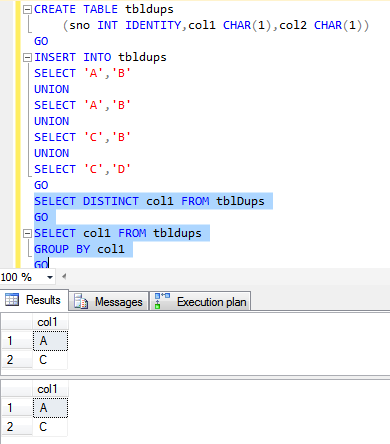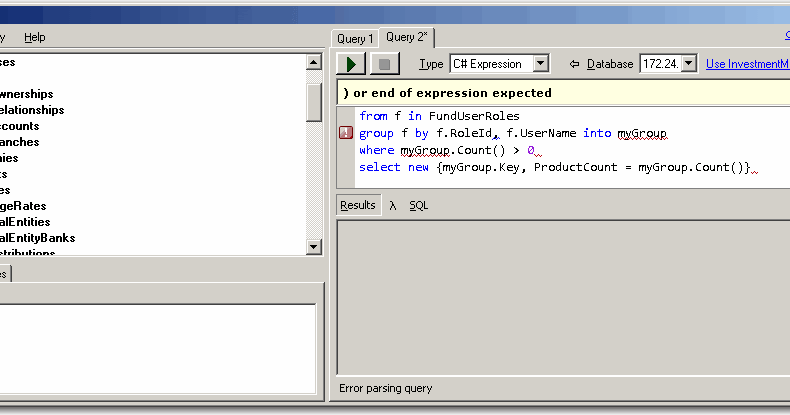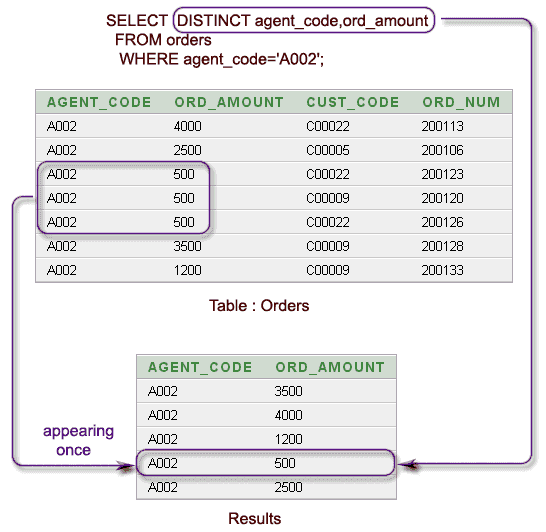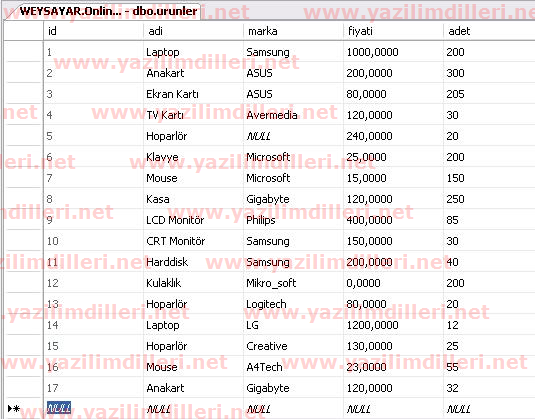One aspect of LINQ I have not covered yet is the equivalent of a GROUP BY in SQL. The GroupBy() function (which of course can be used from a LINQ expression as well as from the method syntax and I will show both) provides this functionality.
Really stuck with Linq to SQL grouping and summing, have searched everywhere but I don’t understand enough to apply other solutions to my own.


How can I do GroupBy Multiple Columns in LINQ. Something similar to this in SQL: SELECT * FROM

Group By in Sql Server: Here I write a query in sql server’s query editor to get employee name and salary. SELECT Name , SUM ( SALARY ) AS SALARY FROM EMPLOYEE GROUP BY Name
I Need to write a linq query Grouping evry line so i will se 1 Line pr Project/ItemNumber combination summing qty into 2 differetn colums 1 showing to qty where location is main and 1 showing the qty where location is not (!=) main.
Really stuck with Linq to SQL grouping and summing, have searched everywhere but I don’t understand enough to apply other solutions to my own.
Look how simple is write the follow SQL Query in LINQ C#: With SQL: select city from students group by city order by city Now in LINQ C#: from student in Students group student.City by student.City into StudentGroup orderby StudentGroup.Key select StudentGroup.Key
Group orders.OrderID, orders.Freight By orders.ShipCity Into Cities = Group To execute this query, you first have to enumerate through the orders and then, in a nested loop, you enumerate through the individual cities and pull out the freight costs per city.



See this SQL: select p.Name as ProductName, SUM(o.NumberOf) as TotalOrdered from [Order] o join [Product] p on o.ProductId = p.Id group by p.Name Returns a nice 2-column table with product names on the left and the total number that product which have been ordered (across all orders) in the right column.

Look how simple is write the follow SQL Query in LINQ C#: With SQL: select city from students group by city order by city Now in LINQ C#: from student in Students group student.City by student.City into StudentGroup orderby StudentGroup.Key select StudentGroup.Key


